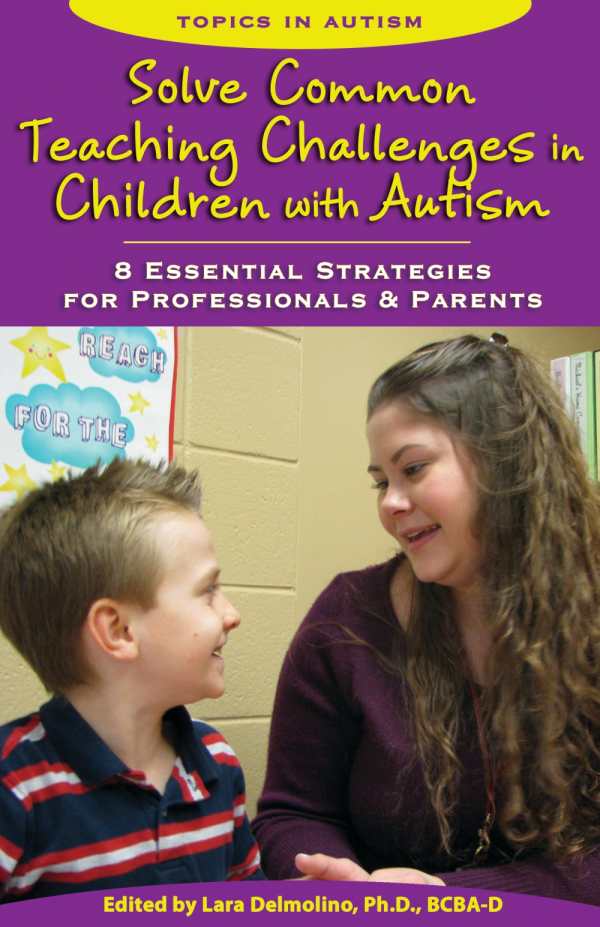Solve Common Teaching Challenges in Children with Autism
8 Essential Strategies for Professionals and Parents
Informative and accessible, this guide can benefit anybody involved in the education of a child with ASD.
The educational needs of children with Autism Spectrum Disorder (ASD) vary on a case-by-case basis, but instructors consistently face many of the same struggles and dilemmas. Editor Lara Delmolino and seven other authors clearly describe eight of these main issues in Solve Common Teaching Challenges in Children with Autism, a well-organized instructional guide easier to understand than its initial impression might suggest.
Each author spends a chapter tackling one common problem concerning ASD education, and each chapter follows the same basic order. They all begin with a case study that leads into a description of the problem itself, noting why the issue happens and how instructors might fix it. Self-assessment questions at the end of every chapter review the preceding material in a manner applicable to real-life circumstances, and supplementary appendixes provide further information related to the instruction of ASD students.
At first glance, the book could appear dry due to its formulaic structure and academic tone, but these features actually work in its favor by bringing focus to an otherwise broad topic. The authors arrange content in a manner that proves easy for both professionals and interested nonprofessionals to follow. Each case study highlights a problem and makes it visible, and most authors reference their case study throughout the chapter, inviting continued clarity in the process. Moreover, the text includes very little technical jargon, and concise explanations follow any terms that could be unfamiliar (e.g., “manding”). These structural elements make the book accessible to a broad audience.
Despite of the book’s subtitle, “8 Essential Strategies for Professionals and Parents,” professional instructors may derive more benefit from its content than parents. Since professionals wrote the book, most of the advice comes from the perspective of how to educate ASD children as students in formal settings. In fact, the authors generally use the term “students” more heavily than “children,” and the classroom receives far more attention than the home. Nonetheless, parents can still understand and apply many of the principles—finding ways to motivate kids, using those motivators effectively, and so on—if they look past the language and focus on the actual concepts, which does create some versatility.
Delmolino states in her introduction that she and the other authors—Kimberly Sloman, Debra Paone, Benjamin Thomas, Kate Fiske, Catriona Francis, Robert LaRue, and Maria Arnold—all have hands-on experience with the educational needs of ASD children and notes that most of their combined experiences occurred at the Douglass Developmental Disabilities Center (DDDC) at Rutgers University. The credentials for the other authors, listed at the end of the book, further validate their claims of expertise. Each author writes with authority.
Even though Solve Common Teaching Challenges in Children with Autism seems geared toward professional instructors, the book can benefit anyone involved in the education of a child with ASD. Informative material presented in a well-structured format contributes to the manual’s broad accessibility.
Reviewed by
Caitlynn Lowe
Disclosure: This article is not an endorsement, but a review. The publisher of this book provided free copies of the book and paid a small fee to have their book reviewed by a professional reviewer. Foreword Reviews and Clarion Reviews make no guarantee that the publisher will receive a positive review. Foreword Magazine, Inc. is disclosing this in accordance with the Federal Trade Commission’s 16 CFR, Part 255.

